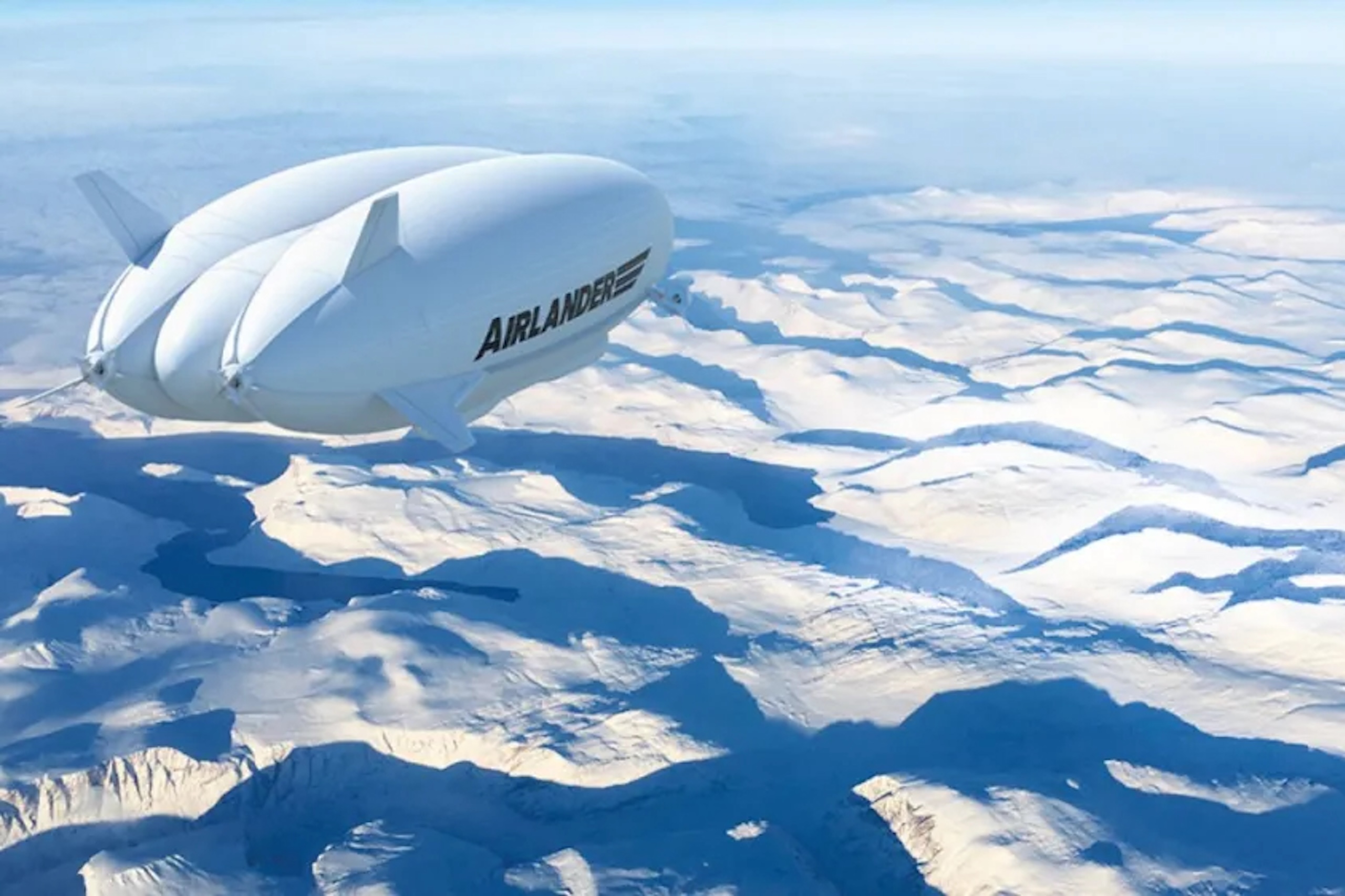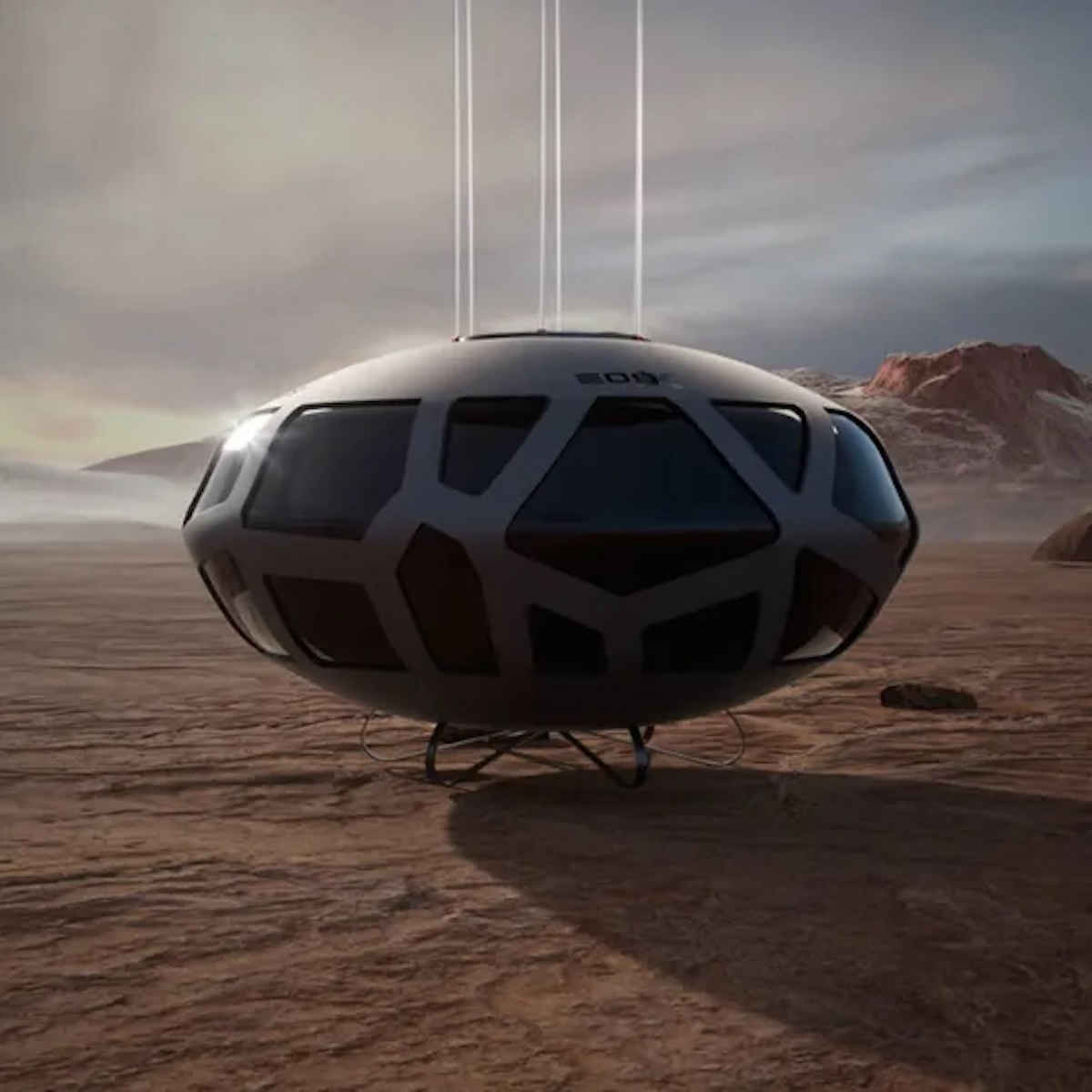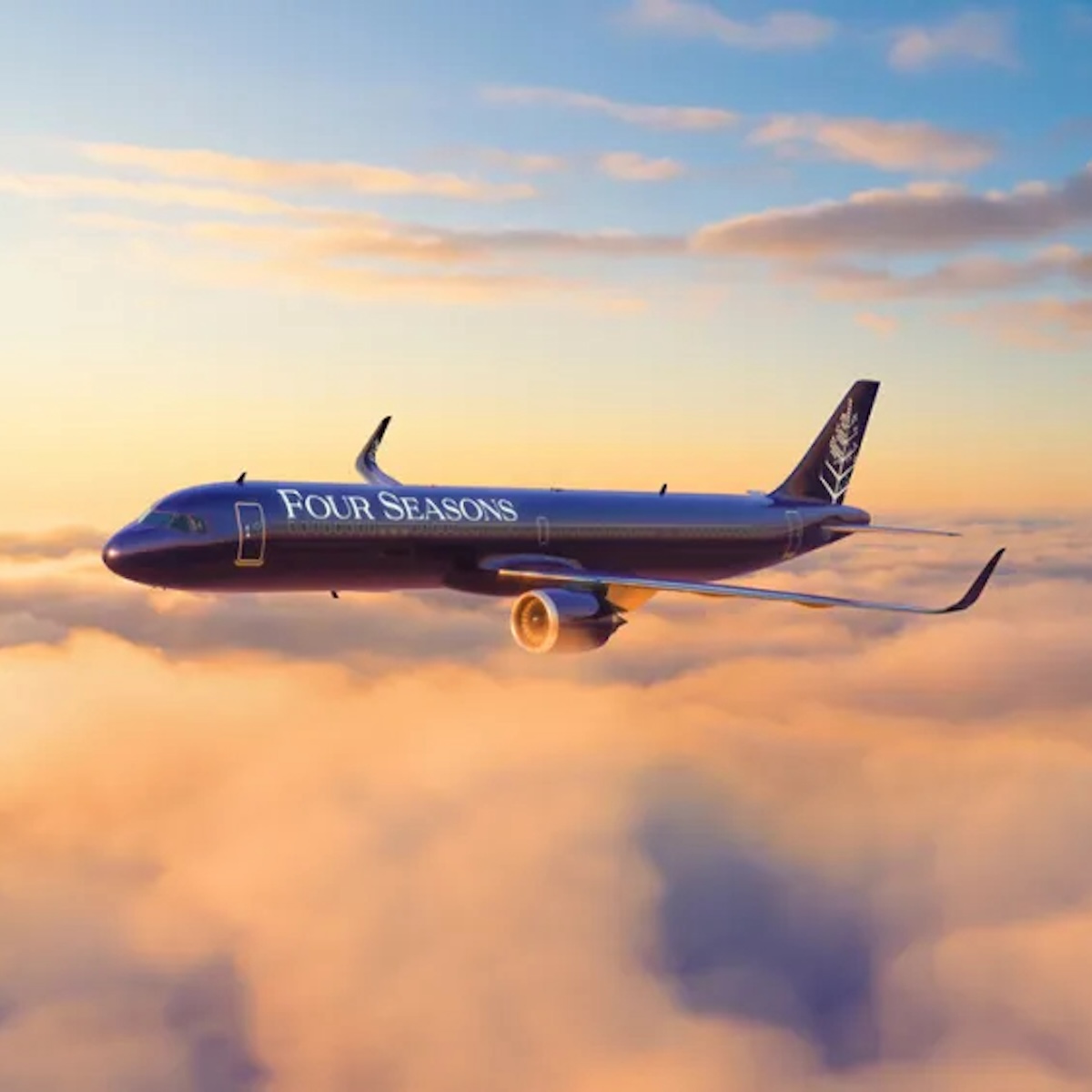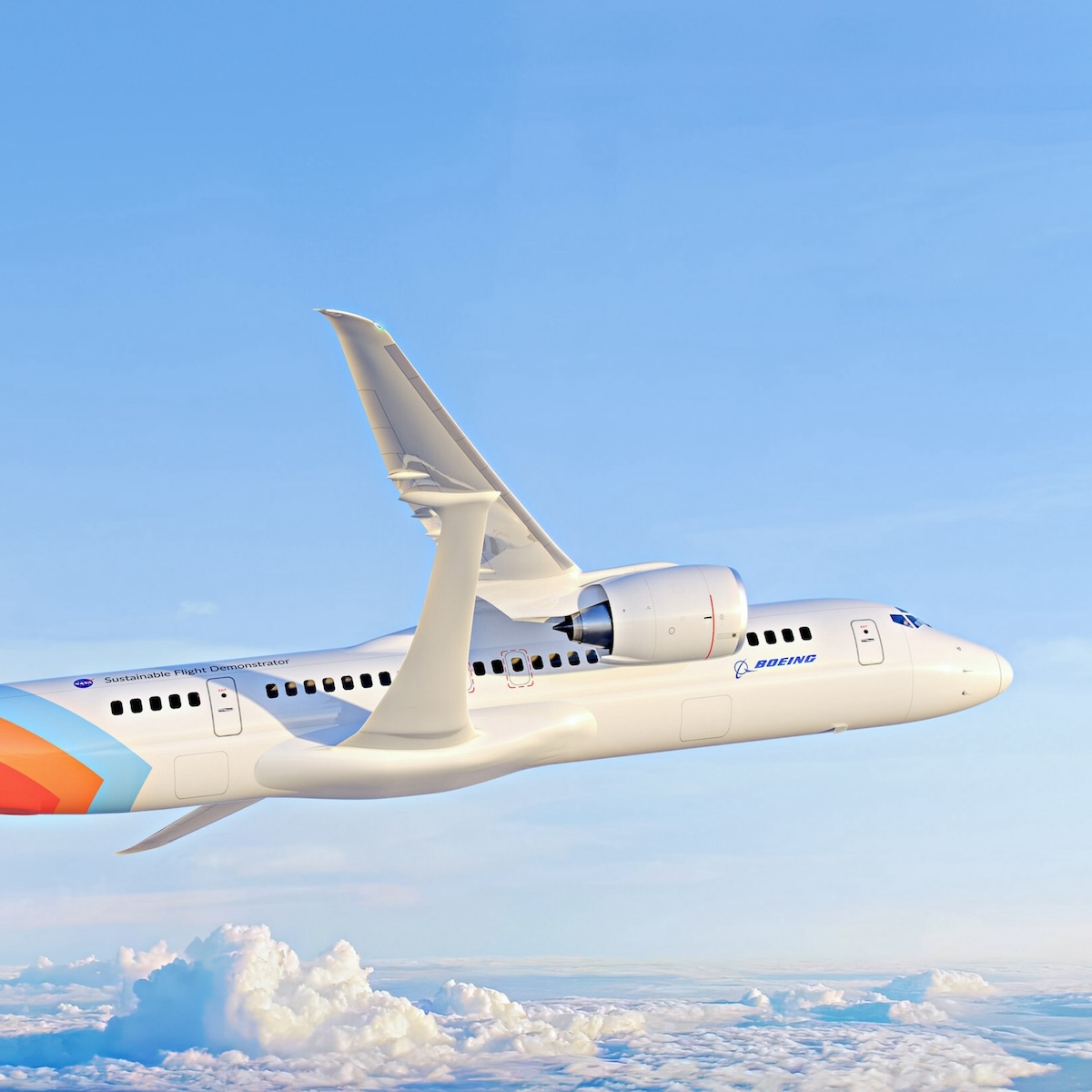Airships have been around for more than 100 years. Zeppelins, dirigibles, blimps, and other forms of lighter-than-air craft have delivered slow, steady travel over oceans and other areas of the Earth that had been inaccessible to most short-range aircraft.
The Airlander 10, with a payload capacity of 10 metric tonnes or about 22,000 pounds, is being touted as the next generation of sustainable aircraft, with a 4,000-mile range and the ability to fly low over deserts and frozen tundra at 20 knots. Its UK designer and manufacturer, Hybrid Air Vehicles (HAV), makes the distinction that the Airlander 10 is not a conventional airship, which is lighter than air, but a hybrid aircraft, with a similar buoyancy to air, and therefore, will not require extensive mooring infrastructure or ground crew.
HAV today announced an agreement with French adventure-travel outfitter Grands Espaces for a 2028 tour of the Arctic Circle. The company told Robb Report that it plans for this to be the first of many Airlanders for both luxury and commercial air travel. “We see it suitable for a variety of roles, but especially for expedition tourism,” says George Land, HVA’s executive director of sales. “It gives you the opportunity to cross large bodies of water, and land on flat spaces—even water—making it possible to land in an austere location. It lets you travel like a small cruise ship.”
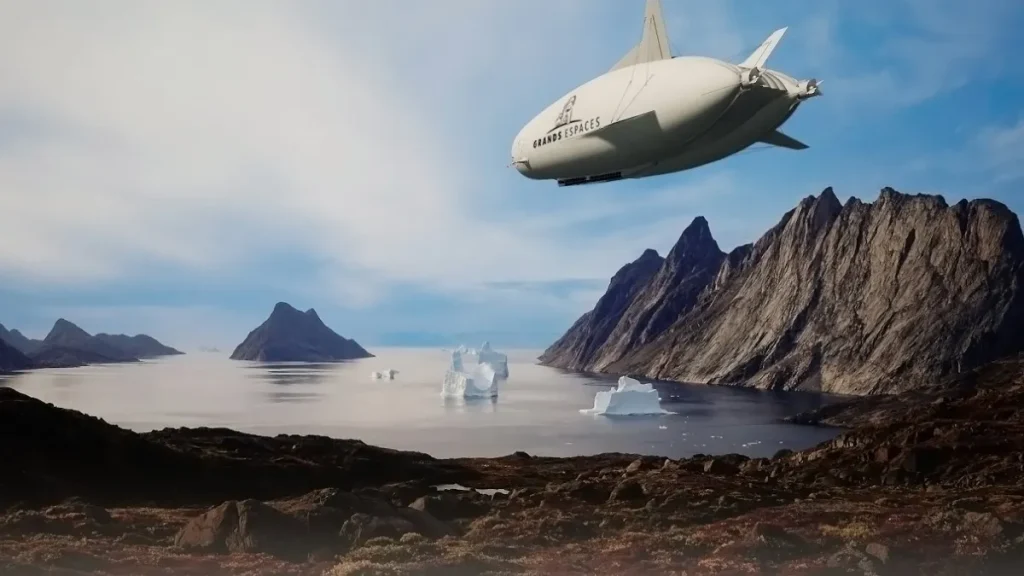
Image courtesy of HAV
The interior of the Airlander 10 can be configured in different ways, with 100 seats in its regional airline form, or eight large suites for 16 passengers, along with common social and dining areas, to suit outfitters like Grands Espaces. Limited to an altitude ceiling of 10,000 feet, the Airlander typically flies closer to 2,000. That proximity gives good views of the terrain below, without requiring cabin pressurisation. “That allows features like floor-to-ceiling windows that you couldn’t have in a pressurised aircraft,” says Land.
Grands Espaces, which was launched by French polar scientist Christian Kempf, will have naturalists and other polar experts on board the cruise, along with clothing and equipment necessary for landing in the Arctic circle. Kempf discussed possible expeditions with HAV for four years. “The signing of this reservation agreement is a significant step forward,” he said.
The announcement is also the first signal of a public collaboration for HAV since its prototype crashed in 2017, after a mooring line got tangled on electric wires. The firm has largely kept silent about the progress it has made in redesigning its aircraft. Land says the prototype was scuttled following the accident and a new design involved many changes. “The initial design was made very quickly for a US Army contract and not for commercial use.”
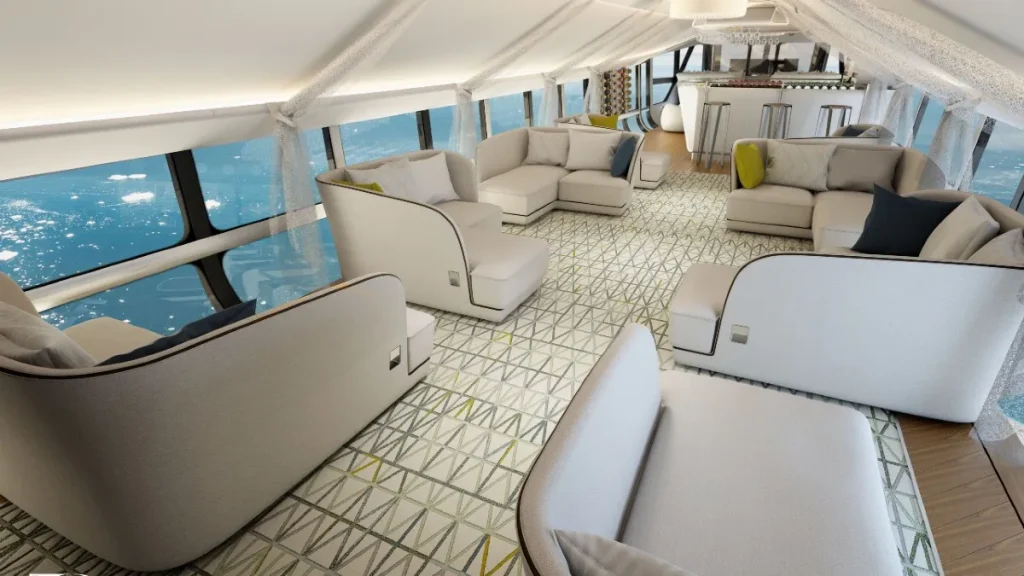
Image courtesy of HAV
The new, improved Airlander 10 involved “many, many changes from the ground up to be a commercially certifiable aircraft.” HAV plans to start manufacturing this year, with entry into service in 2028. The long-term plan includes a manufacturing facility in Yorkshire capable of producing up to 24 Airlanders each year for private clients. The Airlander 50, a larger, 50-tonne version designed to haul cargo, is being developed. Both aircraft could also have military capabilities.
If the plans work out, the Airlander 10 should make its first public appearance at the 2027 Royal International Air Tatoo (RIAT), the world’s largest public military air show.
With the 2017 accident still fresh in many minds, some observers are wondering about the timeline for manufacturing and testing. There is also the need for certification. HAV is working with the UK’s Civil Aviation Authority (CAA), says Land, though it will be the first time this aircraft type will undergo a certification process.
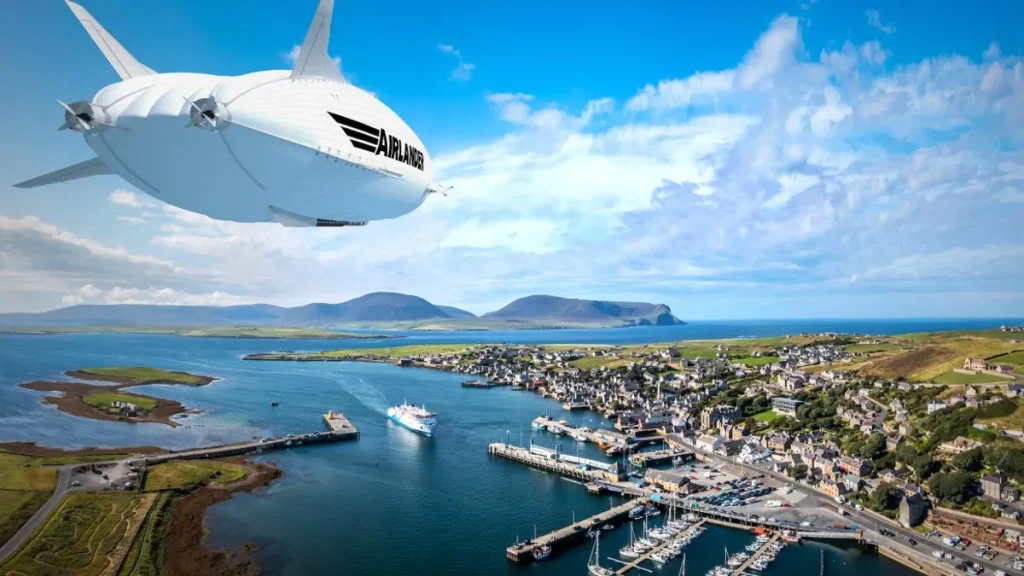
Image courtesy of HAV
Besides tourism, the company sees opportunities in commercial regional air transport. Air Nostrum Group, which includes Mel Air in Malta and Hibernian Airlines in Ireland, has reserved 20 aircraft. The plans are to incorporate hybrid engines in the aircraft as a second step, and later, fully electric propulsion, as part of a sustainability solution.
HAV has an order book of over £1 billion (HK$9.87 billion) and has no direct competitors. The Airlander 10, in fact, is five times longer than the Goodyear blimp. The French company Flying Whales is building even larger 625-foot-long airships, but only for cargo transport, while LTA’s Pathfinder airship in California is a prototype with no stated commercial applications. It received FAA clearance last October for flight tests, but LTA has been quiet about long-term plans.
That puts HAV in a unique position, according to Land. “The combination of societal need and technical development has brought our sector back to peoples’ minds again,” he says. “For the first time, you have an aircraft that can do big overland tours or travel into remote areas. At the moment, ours is without a rival.”





